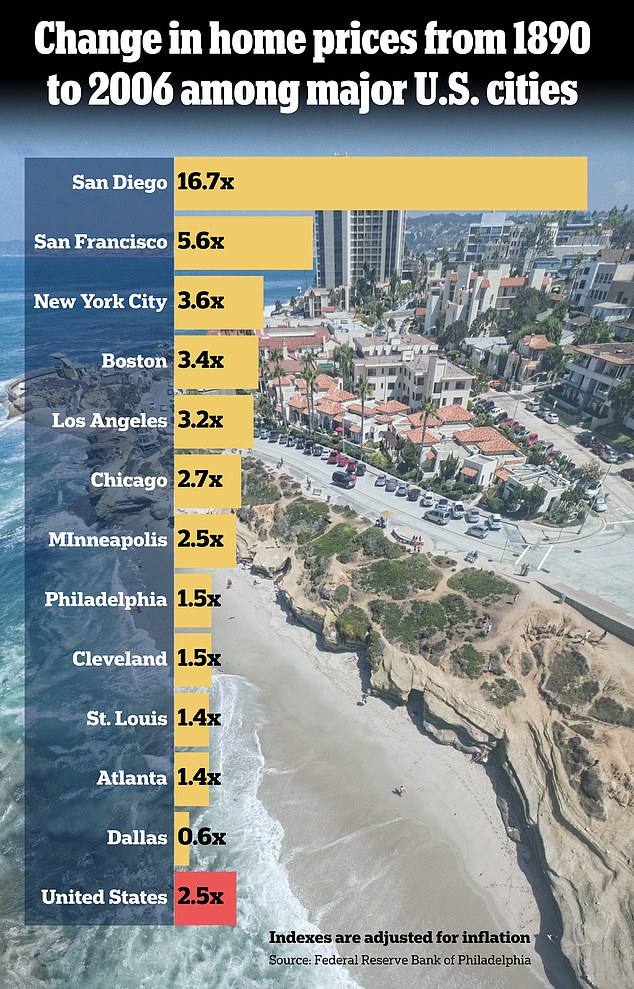New data shows the city where home prices have skyrocketed 16.7-fold over the past hundred years, a rate that eclipses every other major city, including San Francisco and New York.
In San Diego, the California city a half-hour drive from the U.S.-Mexico border, home values appreciated a whopping 1,572 percent between 1890 and 2006, adjusted for inflation, according to a research tool created by the Federal Reserve Bank of Philadelphia.
Home prices in San Francisco, routinely ranked as one of the most expensive cities in the country to live, only increased 5.6 times, or a 462 percent increase, over the same time period.
By comparison, real estate prices in New York, Boston and Los Angeles rose an average of 3.6 times.
This is why San Diego has seen such a shockingly huge increase in home prices.
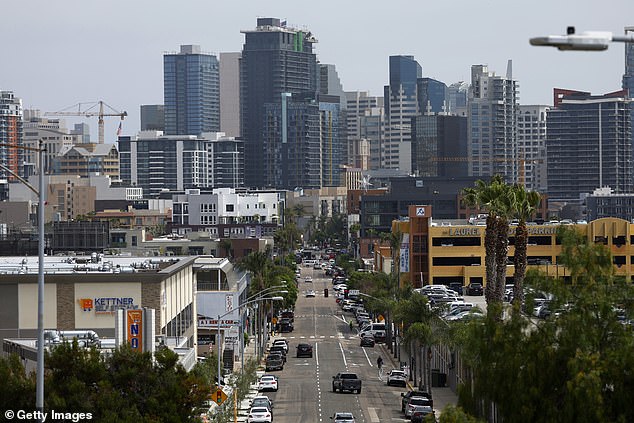
Pictured: Downtown San Diego. The city has transformed from a small town with just over 16,000 inhabitants in 1890 to one of the largest and most expensive metropolises in the country.
The Philadelphia Federal Reserve collected the data it used from home sales prices listed in millions of newspaper real estate listings during the late 19th century, the entire 20th century, and the first six years of the new millennium.
Listings were adjusted for inflation and changes in home quality over time, and the data stops after 2006 because that’s when listings generally moved online.
A closer look at the data reveals that homes in San Diego were much cheaper than buying one in New York, Boston and San Francisco until around 1940, setting the West Coast city up for its massive boom more than a hundred years later.
San Diego was also a fledgling city compared to these giant, industrial metropolitan areas for much of the late 19th and early 20th centuries.
In 1890, the first year for which the Philadelphia Federal Reserve was able to obtain data, New York had a population of just over 1.5 million, while San Diego had only about 16,000.
Comparing these two cities is almost unfair in this period, as New York was already on its way to becoming an urban powerhouse.
It had the beginnings of skyscrapers such as the 18-story New York World Building, opened in December 1890.
In terms of infrastructure, the Brooklyn Bridge opened in 1883, making it the longest suspension bridge in the world at the time. The subway system would open for the first time in 1904.
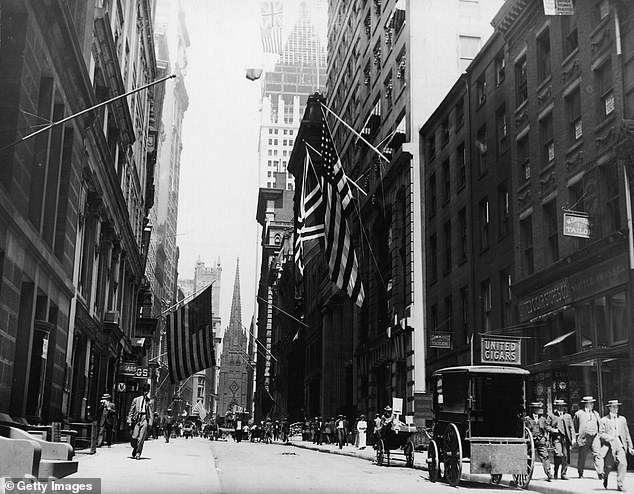
Pictured: Wall Street in downtown Manhattan around 1890
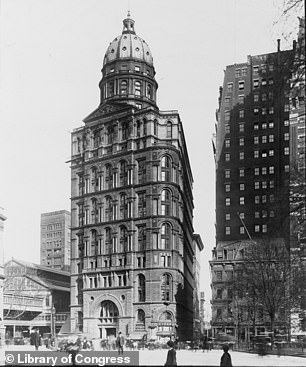
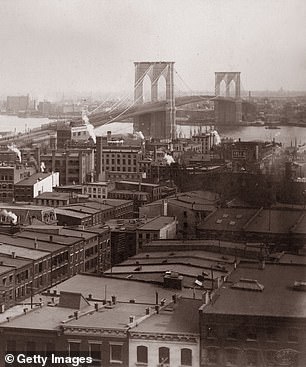
On the left, the 18-story New York World Building, which was completed in December 1890. On the right, the Brooklyn Bridge, an engineering marvel that connected Manhattan to Brooklyn. Construction on the bridge began four years after the conclusion of the Civil War and was completed in 1883.
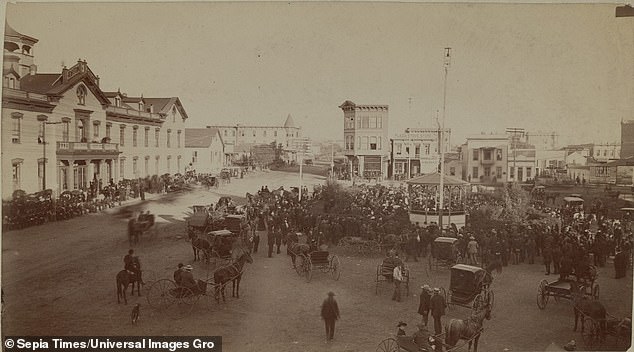
This is what San Diego’s main square looked like around 1880
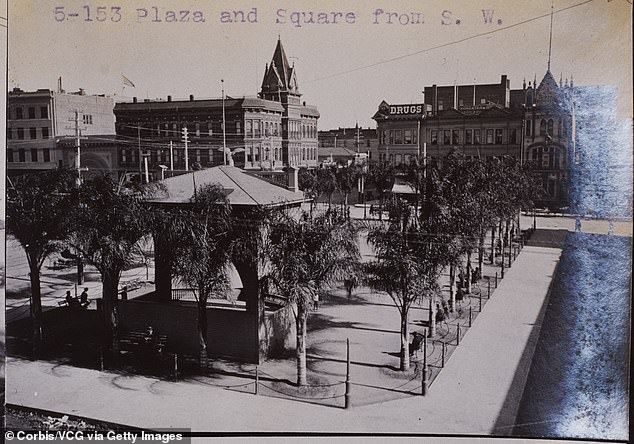
This historic photograph taken sometime between 1905 and 1906 shows another public plaza in San Diego.
And by 1907, the city had more than 400 miles of asphalt pavement, paving the way for automobiles to begin taking over, according to The New York Times.
By comparison, San Diego County as a whole only reached 250 miles of paved roads in 1929, nearly two decades later, according to the county. Department of Public Works.
This means that an early 20th century home in New York, a bustling, lively area with jobs and plenty of transportation, was clearly much more valuable than a home in San Diego would be at the time.
That began to change in the mid-1940s, at the height of World War II, and home prices in the four cities began to converge.
By this time, San Diego’s population had surpassed 200,000 and it was key to the US war effort in the Pacific theater with its large, fully equipped naval base.
The trend of San Diego’s housing market following the pace of other major cities would continue into the 1970s and 1980s, when prices skyrocketed. The same phenomenon occurred in San Francisco.
“California was, even before the ’60s and ’70s, a little bit more expensive than the rest of the country, but it really diverged around… the late ’60s onward,” said MetroSight economist Issi Romem. Chronicle of San Francisco.

In Los Angeles, pictured, home prices increased 3.2 times between 1890 and 2006

Similarly, in Boston real estate has become 3.4 times more expensive over the past century or so.

New York City homes were 3.6 times more expensive in 2006 than in 1890
The Philadelphia Fed does not explain why California housing became so much more expensive during the 1970s and 1980s, but Romem said it had a lot to do with environmental regulations and tax breaks for farmers.
In the 1960s, California created “the world’s first coastal protection agency,” which protected the San Francisco Bay Area from pollution and overdevelopment.
The push toward environmental conservation only strengthened in 1970 when state lawmakers passed the California Environmental Quality Act.
Critics say the law still hampers the construction of houses and apartments today because it requires local planning boards to assess the environmental impact of any new project.
And five years earlier, in 1965, the state legislature passed the Williamson Act, which reduced property taxes for farmland owners who agreed not to develop their land further.
All of this together has created an environment in California where developing new housing stock is incredibly difficult.
This keeps the supply of single-family homes low and demand for them high, so it’s common to see what looks like a starter home in major California metropolitan areas for more than $1 million.
“Single-family areas become practically untouchable,” Romem said.
‘This is the story that explains why homes in California are worth millions (of dollars) while in Texas they are worth hundreds of thousands.’
The only Texas city the Philadelphia Fed examined was Dallas, and home prices there were actually 60 percent cheaper in 2006 than they were in 1890.
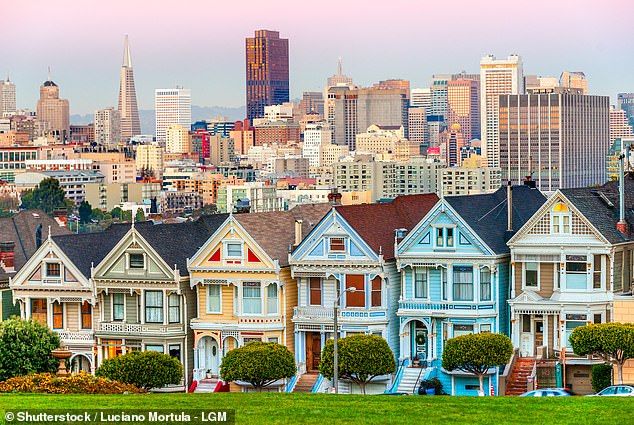
Home prices in San Francisco (pictured) and San Diego rose in the 1970s and 1980s due to environmental regulations and tax breaks for farmers who did not develop their land.
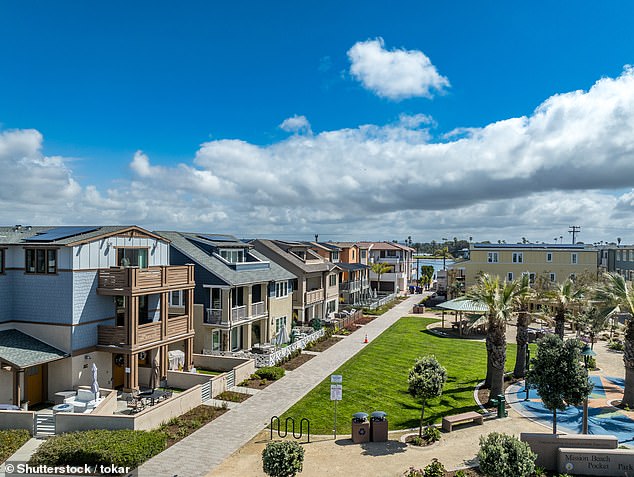
Aerial view of luxury single-family homes in Mission Beach, San Diego. The average home in Mission Beach costs nearly $1.9 million, according to Zillow

In Dallas, pictured, home prices were actually 60 percent cheaper in 2006 than they were in 1890.
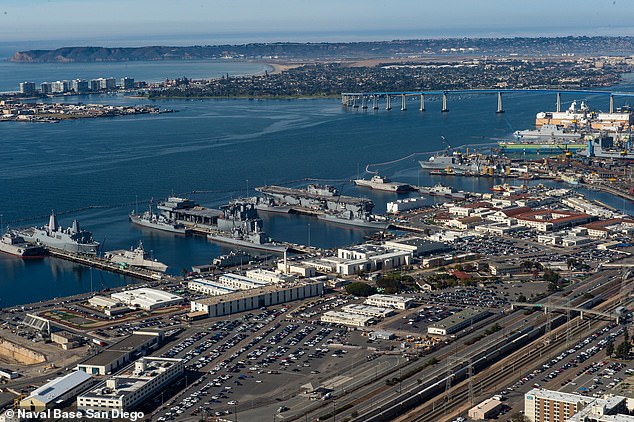
Pictured: San Diego Naval Base, which is not far from downtown.
Due to high living costs, California’s population steadily declined from 2019 until May 2024, when it had a small increase of 67,000 people.
Meanwhile, Texas is growing rapidly, adding about half a million people to its population last year.
And many of the people contributing to Texas’ growth are fleeing California, seeking to take advantage of homes that are a third cheaper than the median price in each state.
Recent trends also suggest there could be a major collapse in real estate prices in the southern US, which could open up the opportunity for first-time buyers to make an offer.
This is certainly not the case in San Diego, where The average home is worth more than a million dollars.11.5 percent more than last year.

